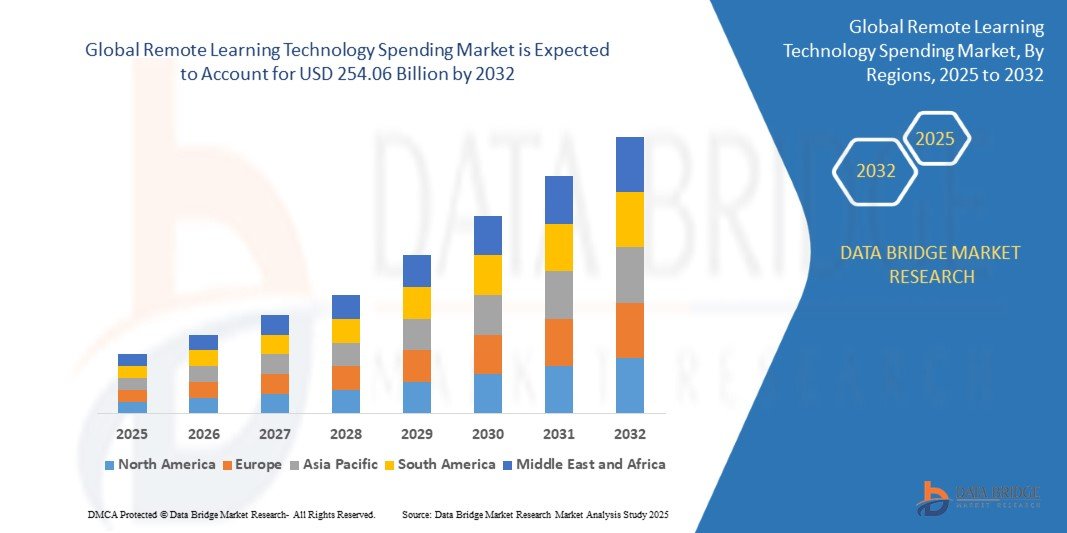Introduction
The educational technology (EdTech) landscape has undergone transformative changes over the past few years, driven largely by global disruptions like the COVID-19 pandemic. Remote learning emerged as a necessity during the crisis, and now it has solidified its place as a key pillar of modern education. As the sector matures, stakeholders-governments, institutions, educators, and investors-are focusing on spending trends that will shape the next phase of EdTech. This article explores the current trends, challenges, and predictions for remote learning spending, shedding light on what the future holds.
Definition
Remote Learning Technology Spending refers to the financial investment made by educational institutions, governments, businesses, and individuals in tools and technologies that enable distance education. This includes expenditures on hardware such as laptops, tablets, and cameras; software like learning management systems (LMS), virtual classrooms, and collaborative platforms; as well as services like internet connectivity, IT support, and digital content creation. The goal is to facilitate effective and accessible learning experiences for students and educators regardless of their physical locations.
Current Trends in EdTech Spending
Rising Investments in Digital Infrastructure:
Governments and educational institutions worldwide are prioritizing the development of robust digital infrastructures. Initiatives like providing universal internet access, distributing digital devices, and upgrading existing IT infrastructure have seen a surge in funding. The goal is to bridge the digital divide, ensuring equitable access to remote learning for students from diverse socioeconomic backgrounds.
Growth of Adaptive Learning Technologies:
Adaptive learning technologies, powered by artificial intelligence (AI) and machine learning (ML), are gaining traction. These systems personalize educational experiences by analyzing students’ strengths, weaknesses, and learning paces. Spending on AI-based tools is expected to grow significantly as institutions strive to improve engagement and outcomes.
Integration of Immersive Technologies:
Remote learning environments are progressively integrating augmented reality (AR) and virtual reality (VR). These immersive technologies make education more interactive and engaging, particularly for STEM subjects and professional training. The falling costs of VR and AR equipment, coupled with improved software solutions, are driving their adoption.
Focus on Teacher Training and Professional Development:
A significant portion of EdTech budgets is being allocated to training educators to effectively use digital tools. As remote learning platforms evolve, continuous professional development is essential to ensure that teachers are equipped to manage virtual classrooms and leverage new technologies.
Emphasis on Cybersecurity:
With the rise of online learning platforms comes a heightened need for cybersecurity. Protecting sensitive student data and preventing disruptions like cyberattacks have become critical concerns, leading to increased spending on secure platforms, encryption tools, and cybersecurity training.
Challenges Influencing Remote Learning Spending
Addressing the Digital Divide:
Despite increased investments, the digital divide remains a significant barrier. Students in rural and underserved communities often lack reliable internet access or modern devices. Overcoming this divide requires sustained and targeted spending, especially in developing nations.
Affordability Concerns:
While EdTech innovations hold promise, their costs can be prohibitive for schools with limited budgets. Balancing the implementation of cutting-edge technologies with affordability remains a pressing challenge.
Resistance to Change:
Educational institutions with long-standing traditional practices may resist adopting new technologies. Convincing stakeholders to embrace remote learning requires demonstrating tangible benefits and providing sufficient training and support.
Ensuring Content Quality:
Spending on digital tools must be accompanied by investments in high-quality, culturally relevant content. Poorly designed curricula or content that fails to engage learners can undermine the effectiveness of even the most advanced platforms.
Sustainability of EdTech Solutions:
The rapid growth of the EdTech market has led to an influx of solutions, some of which may not be sustainable in the long term. Institutions must carefully evaluate which tools offer real value and align with their educational goals.
Predictions for Remote Learning Spending
Increased Allocation to AI-Driven Solutions:
AI is poised to dominate EdTech spending in the coming years. Personalized learning platforms, AI tutors, and analytics tools will become essential components of remote learning ecosystems. By 2030, AI-powered EdTech solutions are expected to account for a substantial portion of institutional budgets.
Rise of Subscription-Based Models:
As schools and universities seek to manage costs effectively, subscription-based models for software and digital tools will gain popularity. These models provide flexibility, allowing institutions to pay for what they use while reducing upfront capital expenditures.
Continued Growth in Mobile Learning:
Mobile devices will remain central to remote learning, especially in regions where smartphones are more accessible than computers. Spending on mobile-first learning apps and platforms will grow, catering to a generation of students accustomed to learning on the go.
Focus on EdTech Startups:
Venture capital investment in EdTech startups will continue to rise. These startups often bring innovative solutions to the table, addressing niche needs such as gamified learning, micro-credentials, and language learning.
Integration of Blockchain Technology:
Blockchain technology will emerge as a game-changer for credentialing and verification. Institutions will invest in blockchain solutions to securely manage academic records, enabling students to share their achievements seamlessly across borders.
Enhanced Accessibility Features:
Inclusivity will be a major focus in future spending. Investments will prioritize tools that cater to students with disabilities, such as screen readers, speech-to-text software, and captioning for video content.
Hybrid Learning Models:
While remote learning will remain crucial, hybrid models combining in-person and online instruction will dominate. Institutions will allocate budgets to technologies that facilitate seamless transitions between these modes, such as cloud-based learning management systems (LMS) and virtual collaboration tools.
Long-Term Impacts on the Education Ecosystem
Globalization of Education:
The growth of remote learning spending will facilitate the globalization of education. Students will have access to courses and certifications from institutions worldwide, fostering cross-border collaborations and cultural exchange.
Lifelong Learning as the Norm:
As technology evolves, the demand for lifelong learning will grow. Institutions and employers will invest in upskilling platforms and micro-credentialing programs to prepare learners for rapidly changing job markets.
Increased Role of Data Analytics:
Spending on analytics tools will provide educators with deeper insights into student performance and learning behaviors. Data-driven decision-making will enable more targeted interventions, improving outcomes for diverse learner populations.
Growth Rate of Remote Learning Technology Spending Market
The market for remote learning technology spending was estimated to be worth USD 84.80 billion in 2024 and is expected to grow at a compound annual growth rate (CAGR) of 14.70% from 2025 to 2032, reaching USD 254.06 billion.
Conclusion
The future of EdTech and remote learning spending is dynamic and full of promise. Investments in cutting-edge technologies like AI, immersive learning tools, and blockchain are expected to redefine the educational landscape. However, addressing challenges such as the digital divide, affordability, and sustainability will be critical to ensuring equitable and impactful outcomes. As institutions, governments, and investors continue to prioritize education as a cornerstone of societal progress, the EdTech sector is set to thrive, paving the way for a more connected and empowered global learning community.



